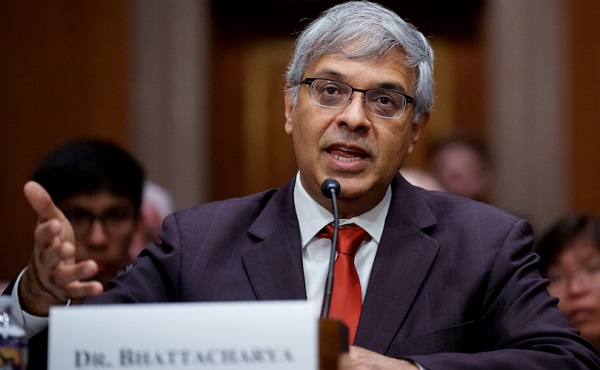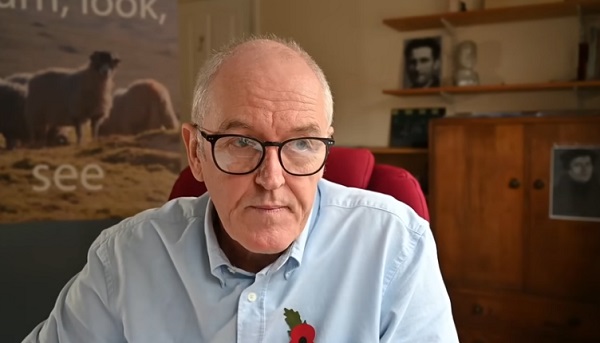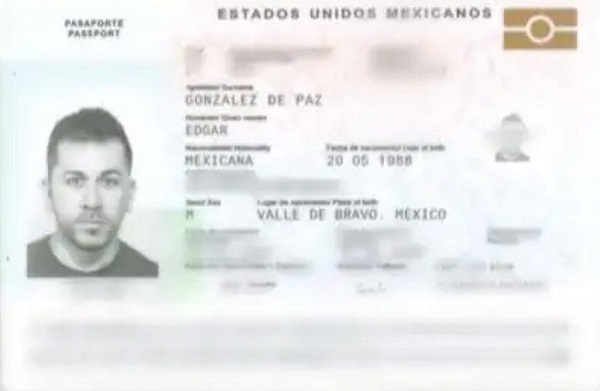Health
How the once-blacklisted Dr. Jay Bhattacharya could help save healthcare

From LifeSiteNews
Now seated at the helm of the National Institutes of Health, Dr. Jay Bhattacharya is poised to reshape not only the agency’s research priorities but the very culture that pushed him to the fringe.
Imagine spending your career studying infectious diseases, only to find that the real virus spreading uncontrollably is censorship. That was the reality for Dr. Jay Bhattacharya, a Stanford epidemiologist who committed the unpardonable sin of questioning the COVID-19 lockdown orthodoxy. His punishment? Digital exile, courtesy of Silicon Valley’s Ministry of Truth.
In December 2022, the Twitter Files exposed what many had long suspected: Twitter had quietly placed Bhattacharya’s account on a Trends Blacklist. This ensured that his posts, often critical of lockdowns and mask mandates, would never see the light of day on the platform’s trending topics. In other words, Twitter’s algorithm worked like a digital bouncer, making sure his dissenting opinions never made it past the velvet rope.

And Twitter wasn’t alone. Facebook, ever eager to please its government handlers, scrubbed the Great Barrington Declaration from its pages. That document, co-authored by Bhattacharya and other esteemed scientists, dared to suggest that maybe, just maybe, locking down entire populations wasn’t the best strategy. Instead, it proposed focused protection for the most vulnerable while allowing the rest of society to function. For this, it was sent to the digital equivalent of a gulag.
These experiences took center stage during Bhattacharya’s Senate confirmation hearing for the directorship of the National Institutes of Health (NIH). Republican lawmakers, who suddenly found themselves cast as the last defenders of free speech in scientific discourse, saw his nomination as a win.
During his testimony, Bhattacharya didn’t mince words. He detailed how the Biden administration played an active role in orchestrating the suppression of alternative views. It wasn’t enough for officials to push their own pandemic policies — they needed to ensure that no one, regardless of expertise, could challenge them in the public square.
The Science™ vs. The Science
Bhattacharya’s testimony laid bare an uncomfortable truth: the pandemic was a crisis of speech. “The root problem was that people who had alternative ideas were suppressed,” he told Sen. Ashley Moody (R-Fla.). “I personally was subject to censorship by the actions of the Biden administration during the pandemic.”
In a functioning society, that statement would spark bipartisan outrage. Instead, it barely registered. The people who spent years chanting “trust the science” were never interested in science at all.
Real science thrives on debate, skepticism, and the understanding that no single expert — no matter how credentialed—holds absolute truth. But during COVID, science became The Science™ — a government-approved doctrine enforced by Silicon Valley moderators and federal bureaucrats. Deviate from it, and you weren’t just wrong. You were dangerous.
A government-sanctioned muzzle
Bhattacharya wasn’t silenced in some haphazard, accidental way. The Biden administration actively leaned on social media companies to “moderate” voices like his. In practice, that meant tech executives — most of whom couldn’t tell a virus from a viral tweet — decided which epidemiologists the public was allowed to hear.
He responded with a lawsuit against the administration, accusing it of colluding with Big Tech to crush dissent. But in a ruling as predictable as it was revealing, the Supreme Court dismissed the case, arguing that Bhattacharya and his fellow plaintiffs lacked standing. Meaning: Yes, the government may have pressured private companies into silencing critics, but unless you can prove exactly how that harmed you, don’t expect the courts to care.
The real role of science
Despite everything, Bhattacharya didn’t argue for scientists to dictate policy. Unlike the public health bureaucrats who spent the pandemic issuing commandments from their Zoom thrones, he made it clear: “Science should be an engine for freedom,” he said. “Not something where it stands on top of society and says, ‘You must do this, this or this, or else.’”
That distinction matters. Science informs, but policy is about trade-offs. The problem wasn’t that officials got things wrong — it’s that they refused to admit the possibility. Instead of allowing open debate, they silenced critics. Instead of acknowledging uncertainty, they imposed rules with absolute certainty.
Bhattacharya wasn’t censored because he was wrong. He was censored because he questioned people who couldn’t afford to be.
His confirmation hearing made one thing clear: science wasn’t about data. It was about power. And in Washington, power doesn’t like to be questioned.
Science, money and power
At the heart of the hearing was a fundamental question: Who controls science that people are allowed to talk about? The NIH, with its $48 billion budget, is less a research institution and more a financial leviathan, shaping the direction of American science through the projects it funds (or doesn’t) fund.
Bhattacharya’s nomination comes at a moment when the battle lines around scientific freedom, government intervention, and public trust in research are more entrenched than ever. The pandemic shattered the illusion that science was above politics. Instead, it exposed just how much political and corporate interests shape what counts as “settled” science.
The irony is thick enough to cut with a knife. The man once branded too dangerous for social media, blacklisted for questioning lockdowns, and effectively erased from mainstream discourse is now being handed a key role in the very government that tried to silence him. Dr. Jay Bhattacharya, once forced to the margins, is now at the center of power.
A new administration has decided that maybe — just maybe — silencing dissenting scientists wasn’t the best pandemic strategy. And in a twist no Hollywood scriptwriter would dare to pitch for being too on-the-nose, Bhattacharya wasn’t being welcomed back into the conversation — he’s being put in charge of it.
Bhattacharya was confirmed following a party-line vote Tuesday evening. The decision came after a similarly partisan endorsement from the Senate Committee on Health, Education, Labor and Pensions (HELP), clearing the final hurdle for President Donald Trump’s nominee.
Equally central to his testimony was Bhattacharya’s call for a sweeping shift in NIH priorities. He proposed a decentralization of research funding, stressing the need for greater inclusion of dissenting voices in the scientific process, an apparent rebuke of the consensus-driven culture that dominated during the pandemic. He emphasized targeting resources toward projects with a clear and measurable impact on public health, dismissing other NIH initiatives as “frivolous.”
Now seated at the helm of the National Institutes of Health, Dr. Jay Bhattacharya is poised to reshape not only the agency’s research priorities but the very culture that pushed him to the fringe. His confirmation, hard-won and unapologetically political, is already shaking the scaffolding of a scientific establishment that long equated conformity with consensus.
Reprinted with permission from Reclaim The Net.
Health
Lack of adequate health care pushing Canadians toward assisted suicide

From LifeSiteNews
The family of an elderly man is speaking out about the terrible hospital conditions that led their father to request euthanasia before he died of natural causes.
The family of Cleo Gratton, an 84-year-old retired diamond driller who died earlier this month in Chelmsford, Ontario, of natural causes after being approved for assisted suicide, is speaking publicly about their appalling experience in the Canadian healthcare system.
According to the CBC, the elderly man “told his family he would rather die than go back to Health Sciences North in Sudbury,” and that a recent stay there found Gratton, who was suffering from heart disease and kidney failure, spending one night in the emergency room and then being transferred to a bed sitting in the hallway on the seventh floor.
“There were no lights, all the bulbs in that hallway had been completely removed,” his daughter, Lynn, told the CBC. “The only light we had was almost like a desk lamp that had been bolted to the wall. Patients are passing by, nurses are going by, no privacy, no compassion, no dignity.” The visit took place in mid-October, after which Gratton decided to apply for “medical aid in dying,” or assisted suicide.
Lynn said that nurses had to use headlamps to inspect her father’s feet, and that the experience was “just one thing after another and it really opened our eyes to what’s going on in our hospitals. My dad said, ‘Push, push, push for change. Make people aware of what’s gong on. Open the discussion, bring it to your MP, your MPP, keep going straight up.”
His family is now honoring his wishes to speak out about his experience. The doctors and nurses, Lynn emphasized, were “amazing,” but she noted that they seem overworked. “Why are they still taking in patients if we have an overcrowding issue and they have no place to put these people?” she said.
Cleo Gratton, who died of natural causes surrounded by his family before he could go through with assisted suicide, is just the most recent of many examples of Canadians opting for assisted suicide because they could not access the care that they actually desired.
In Quebec last year, Norman Meunier, a quadriplegic man, developed bedsores after four days left on an ER stretcher without a good mattress. That experience combined with lack of available homecare pushed him to request, and receive, assisted suicide.
An unnamed woman in her 80s, referred to in a MAID report as “Mrs. B,” received MAID earlier this year after requesting but being denied palliative or hospice care. Instead, with her spouse burning out as the result of her care, a rushed MAID assessment was completed, and she died by lethal injection.
In 2022, 44-year-old Winnipeg woman Sathya Dhara Khovac died by euthanasia after failing to receive the homecare resources she had desperately sought. In her posthumous obituary, she said she could have had more time if she’d had more help.
In 2019, 41-year-old Sean Tagert was euthanized after spending years attempting to find and fund the homecare and resources he needed to stay in the community where his son lived. He did not want to die but felt that he had no other choice.
And, among other stories, at least four Canadian veterans were offered assisted suicide in lieu of the unavailable mental health supports they were requesting.
Stories of Canadians seeking palliative care, mental health resources, homecare, and other medical support finding that the only option available to them is assisted suicide have become routine over the past several years. Euthanasia has become a pressure valve for an overworked and under-funded healthcare system serving an aging population increasingly need of complex care — and if assisted suicide for mental illness is legalize, things will get much, much worse.
Dr John Campbell
Cures for Cancer? A new study shows incredible results from cheap generic drug Fenbendazole

From Dr. John Campbell
You won’t hear much about Fenbendazole from the regular pipeline of medical information. There could be many reasons for that. For one, it’s primarily known for it’s use in veterinary medicine. Somehow during COVID the medical information pipeline convinced millions that if a drug is used on horses or other animals it couldn’t work for humans. Not sure how they got away with that one considering the use of animal trials for much of modern medical history.
Another possible reason, one that makes at least as much sense, is that there’s no business case for Fenbendazole. It’s been around for decades and its patent expired in the early 1990’s. That means it’s considered a generic drug that a pharmaceutical company from India could (and does) produce in mass quantities for very little profit (compared to non-generics).
So Fenbendazole is an inexpensive, widely accessible antiparasitic drug used in veterinary medicine. During the COVID pandemic a number of doctors, desperate for a suitable treatment, tried it with reportedly great levels of success. Over some time they discovered it might be useful elsewhere. Some doctors are using Fenbendazole to help treat late stage cancer. Often this is prescribed when the regular treatments clearly aren’t working and cancer is approaching or has already been declared stage 4.
What they’ve found at least in some cases is astounding results. This has resulted in a new study which medical researcher Dr. John Campbell shares in this video.
-

 Crime1 day ago
Crime1 day agoCBSA Bust Uncovers Mexican Cartel Network in Montreal High-Rise, Moving Hundreds Across Canada-U.S. Border
-

 Environment1 day ago
Environment1 day agoThe Myths We’re Told About Climate Change | Michael Shellenberger
-

 Energy2 days ago
Energy2 days agoIt should not take a crisis for Canada to develop the resources that make people and communities thrive.
-

 Dr John Campbell2 days ago
Dr John Campbell2 days agoCures for Cancer? A new study shows incredible results from cheap generic drug Fenbendazole
-

 Artificial Intelligence1 day ago
Artificial Intelligence1 day agoAI Faces Energy Problem With Only One Solution, Oil and Gas
-

 Health1 day ago
Health1 day agoLack of adequate health care pushing Canadians toward assisted suicide
-

 Alberta18 hours ago
Alberta18 hours agoATA Collect $72 Million in Dues But Couldn’t Pay Striking Teachers a Dime
-

 Media17 hours ago
Media17 hours agoBreaking News: the public actually expects journalists to determine the truth of statements they report








